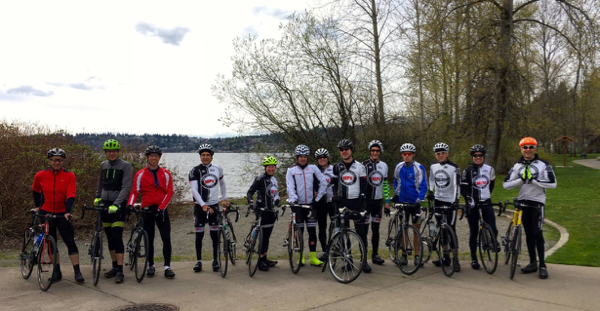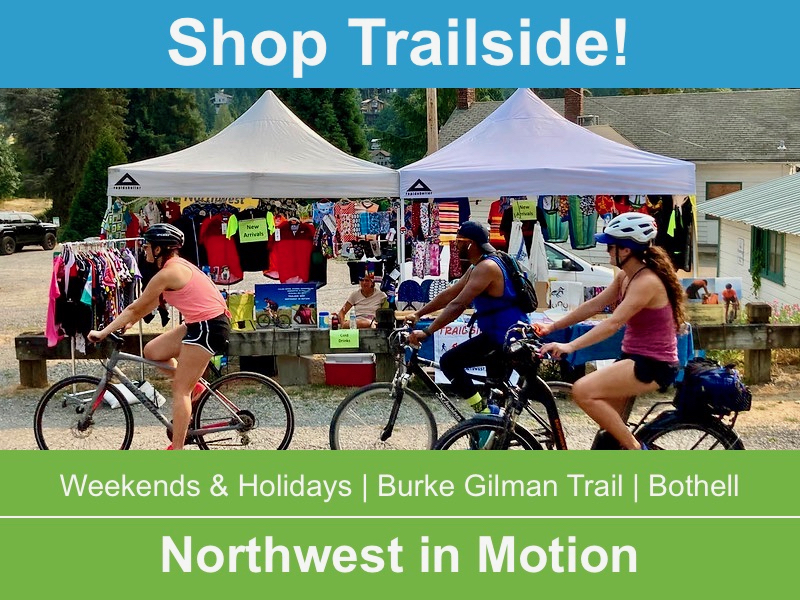If you’ve been cycling (or doing whatever your sport is) for very long, you quickly realize to never to underestimate anyone’s abilities, despite physical appearances. First impressions can be deceiving.
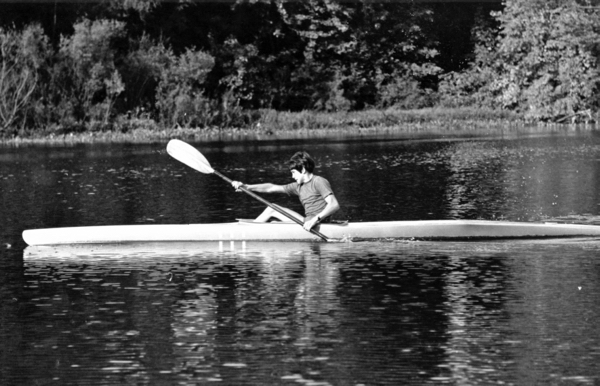
A few years ago, at the start of a High Performance Cycling team ride, Greg Barton introduced himself as a new member, and that he was nervous about keeping up with the group because he had been born with clubfoot.
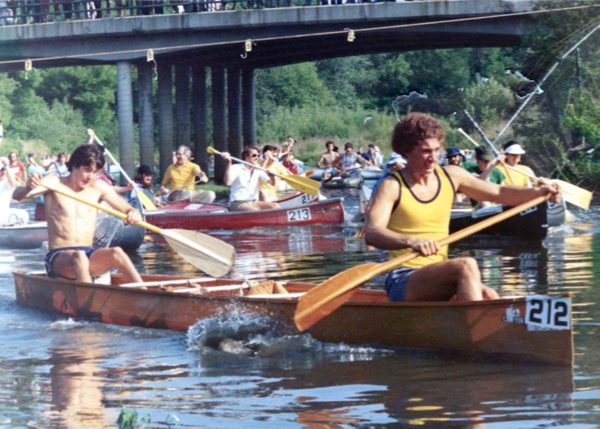
Greg failed to provide a small bit of key information: He’s an Olympic kayaking medalist.
Needless to say, Greg has no problem keeping up with the fastest riders on the team.
Greg “Buck” Barton, 57, was a top-level sprint kayaker from the mid-1980s to the early 1990s. He competed in three Summer Olympics, and he won four medals with two golds (K-1 1000 m, K-2 1000 m: both 1988) and two bronzes (1984, 1992: both in K-1 1000 m). He also won six medals at the ICF Canoe Sprint World Championships with four golds (K-1 1000 m: 1987, K-1 10000 m: 1985, 1987, 1991), a silver (K-1 10000 m: 1990), and a bronze (K-1 1000 m: 1991).
The United States Canoe Association‘s Greg Barton Cup Challenge is named after him. After he won the Olympic gold medals, the traffic circle in downtown Homer, Michigan, his adopted home town, was named in his honor.
Greg is currently a co-owner of Epic Kayaks, which makes high-end kayaks, surfskis, and paddles.
1984 Bronze:
Tell us about your nickname, “Bucky.”
My nickname in my younger years was “Buck”. It started from a word I made up at age 3. Then in my early teens, my brother called me Buck at a kayak event and everybody picked up on it. The nickname died out in the 90’s. People who still call me Buck were from a certain period of my life (teens through twenties). There was also a Bucky (Waters) announcing my 1984 event on NBC.
You were born with clubfoot. How did it influence your participation in sport as a youngster and a teen? How did you overcome this apparent handicap to compete at the highest level?
I was born with club feet (turned inwards and walking on outsides of feet). A series of surgeries in the early 70’s fused several bones together, resulting in a loss of range of motion, and killing growth plates. The result was a leg length discrepancy and my feet worse than they had been before. Orthopedic medical techniques were very crude in those days. The best thing would have been to wait 15-20 years and they could have been 100% corrected.
I still did sports, even though I was at a disadvantage after the surgeries (and having 3-4 months downtime recovering after each one). I spent more than a year of my life on crutches (spread over a period of 3-4 years). That helped to build upper body strength. Even though the surgeries were only one foot at a time, I learned to walk supported only on crutches with both legs off the ground at once (to alleviate boredom).
I even ran cross country in high school (although with mediocre results) because we had a good team and a great coach.
I enjoyed cycling because, biomechanically, I am at much less of a disadvantage compared to running and it does not give me any pain in my feet or ankles. Even before the surgeries, I loved to bicycle.
1988 Olympic win:
How did you get into kayaking, and how did you progress to top-level competition?
My parents and older brother Bruce got into canoeing and canoe racing in Michigan when I was a child, and I wanted to do it with them. At an event, we met Marcia Jones Smoke who won an Olympic bronze medal in kayaking (1964). She introduced us to Olympic-style kayaking and the first coach for my brother, my little sister, and me.
At first I was competing on a regional level and soon at the national level. My first international (other than Canada) competition was the Jr. World Championships in Rome at age 15. By age 18 I was on the Sr. National and World Championship team.

How did the Bronze in 1984 motivate you for 1988?
1984 was a magic year for me. After boycotting the 1980 Olympics and a few off years (due to chronic fatigue), my training and racing started falling into place. I started podium finishing and even winning some international competitions. We were the home team in Los Angeles and I was stoked to take home a medal. I was still young and figured that 4 more years of good training might move me up on the podium.
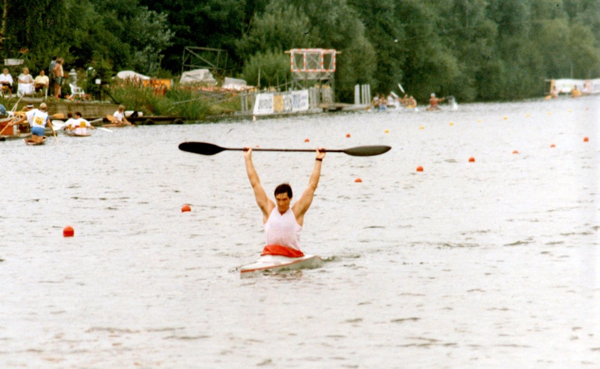
Your win at Seoul 1988 in the 1000 was compared to the performances of cross-country skier Bill Koch, marathoner Frank Shorter, and cyclist Greg LeMond, who all upset European dominance of their respective sports. Given that most readers probably don’t follow kayaking, did your performances in 1988 set the stage for the future of the US program?
In the USA, minor, non-mainstream sports have 2 big challenges:
1. Kids see million dollar contracts in basketball, football, etc. and there is incentive to play those sports rather than other less mainstream/televised sports.
2. We fall prey to the “big fish in a small pond syndrome”. People think that being the best in USA is good enough, even though they may be ranked 143rd internationally in an event dominated by Europeans or other regions.
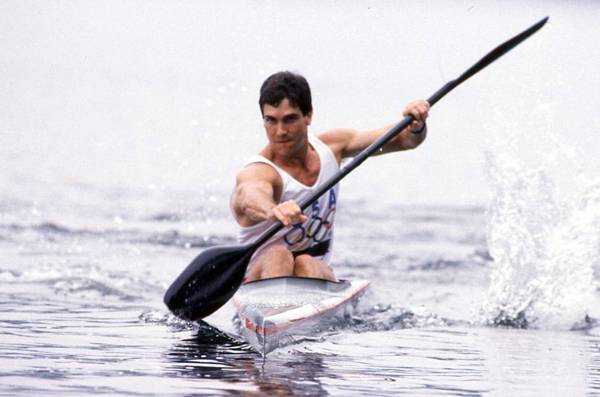
We need to realize that it’s a completely different game overseas requiring higher goals and a huge commitment to compete with the best in the world. While USA had some success in canoe/kayak during the ‘40’s, ‘50’s and early 60’s, by the 70’s we were lagging far behind Europe and rarely were even close to making finals (top 8 or 9) in international competitions. It takes a Bill Koch or Greg LeMond to push through these barriers.

My brother Bruce helped me a lot in this respect. At age 17, he paid his own way to Europe to train and compete for a month with a friend and see first hand what they did. The next year, he had two 6th place finishes at the Jr. World Championships (the same event where I competed in a 4 person kayak that was far from making the finals). I realized that with the right dedication and mindset, it was possible for US kayakers to compete with the best.

We had a group of several kayakers who came up together and pushed each other during the late ‘80’s and early ‘90’s. Norman Bellingham was my partner in the Gold Medal winning double kayak event. Mike Herbert and Terry Kent did not medal in the Olympics, but did take home some hardware from World Championships. The US Olympic Committee was ecstatic that we’d taken a down and out program and turned it into Olympic medals. Suddenly, there was funding where before there had been none. Unfortunately, as our group retired, there was not the same talent and/or commitment following in our footsteps and team USA has fallen far down in international rankings. Funding has dried up. I’d love to see a resurgence of USA canoe/kayak at the Olympic level, but it will be an uphill battle (again).
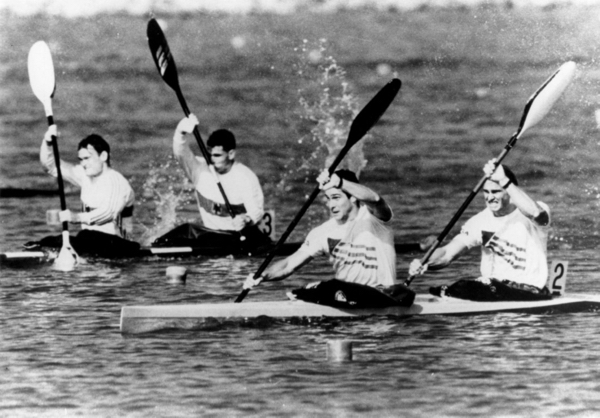
One commenter labeled you as a “forefather of surfskiing.” How did you get into surfski and how have you contributed to that discipline. How is Epic Kayaks involved?
I first saw and tried surskis in the mid ‘80s when I was in Hawaii for the Molokai Hoe, a 6-person outrigger crossing from Molokai to Oahu. My first surfski race was the Molokai crossing in 1989 – the year after I won my Olympic gold medals. Before traveling to Hawaii for the event, I thought I had a chance to win, but soon learned that skill and experience in downwind surfing is more important than pure speed and strength in these competitions. I finished in 15th position overall, far behind the winner.
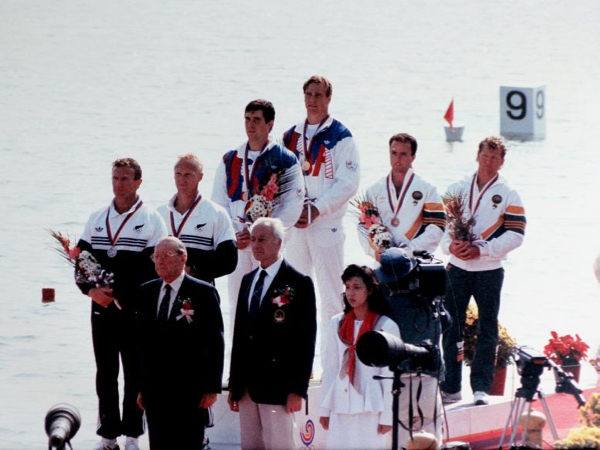
But, that piqued my interest in surfskis and I’ve been much more involved since retiring from Olympic type competition in 1992. To me, this is one of the most fun types of paddling – you surf continuously – jumping from one wave to another. It’s like surfing where you never have to paddle back out through the breakers, or skiing where after a downhill run, instead of taking a lift back up, you find another run to ski down, and then another. Even though you may actually be surfing less than 50% of the time, it’s still exhilarating.
While I’ve never spent enough time training in prime downwind conditions (such as in Hawaii or Australia) to beat the best surfski paddlers, my skills have improved and I’ve done a lot of work on the designs of the surfski kayaks. Epic kayaks has been a leader in producing a range of surfskis from user-friendly entry level models, up to the highest performance racing craft.
Molokai Interview:
How did you end up in Seattle?
I first moved to the Pacific Northwest at the end of 1989. I had done some promotional work for Ocean Kayak, located near Bellingham. Once the owner, Tim Niemier, found out I was an engineer he hired me to design their rotational molding machines.
I moved down from Bellingham to Seattle when I got married. I started Epic Paddles, which eventually became Epic Kayaks.
Where do you think paddle sports in general and surfskiing are headed? How are younger participants progressing the sport?
Paddlesports and surfski in particular are continuing to grow. Although surfski is still a small fringe sport. On one hand, you see a lot of kayaks in automobile advertisements as an active outdoor sport that people can aspire to do. On the other hand, many people still view canoeing and kayaking as leisure sports, floating down a gentle river and don’t realize that there is a fitness and competitive component to paddling.
At this point, younger competitive paddlers tend to be involved in flatwater sprint racing or whitewater. As in cycling, the largest number of surfski (or kayaking in general) participants are in their 40’s and 50’s. These are the people that have the time and resources to put towards their sport. They also realize that regular exercise is a key to remaining healthy as they get older.
What are your recommendations for folks looking to get into kayaking?
The first is to think of what type of paddling you want to do. Just as there are many different types of cycling (road, mountain, cross, touring, commuting, etc.), there are many types of kayaking – flatwater, whitewater, open water (ocean), touring, etc. The equipment can range from inexpensive (less than $500 for a kayak + paddle) to expensive (up to $5000 for a super light carbon version).
As in cycling, your equipment needs to match the intended use. And you’ll have more fun with lightweight performance equipment vs. a cheap entry level version. But one thing that differs greatly is the learning curve to become proficient. While a relatively new cyclist will be capable of riding an elite level road bike (not falling off while riding a smooth road), a beginning kayaker will struggle with an unstable “racing” kayak – capsizing and swimming until their stability skills improve. There are some very nice, lightweight intermediate level kayaks with a much quicker learning curve.
I’d recommend trying kayaking by renting first or going out with a friend. Find others that can teach you and improve your skills. Then decide what type of kayaking you want to do and purchase the appropriate equipment.
How did you get into cycling? What role does cycling play for you?
Since I was a kid, I’ve always enjoyed cycling. When I was 8 or 9, I purchased my own 3 speed bicycle with money I saved working on the farm. Cycling was my form of transportation during my college days – I never had a car at the University.
Cycling is fun for me. I like the sensation of the speed – for the same amount of effort, you can go much faster on a bicycle than you can running.
Cycling is a great form of cross-training. For kayakers, the 2 most popular cross training activities are lifting weights in the gym to build strength, and running to build cardiovascular endurance. But for me, cycling is more fun (than running) and I can cycle pain free while my feet start killing me if I put in too many running miles.
Cycling and kayaking are perfect complements for full body fitness. Cycling works the lower body, while kayaking builds upper body strength and fitness. That’s becoming more and more important to me now. During my competitive days, one of my coaches said “your legs only need to be strong enough to get you down to the water.”
